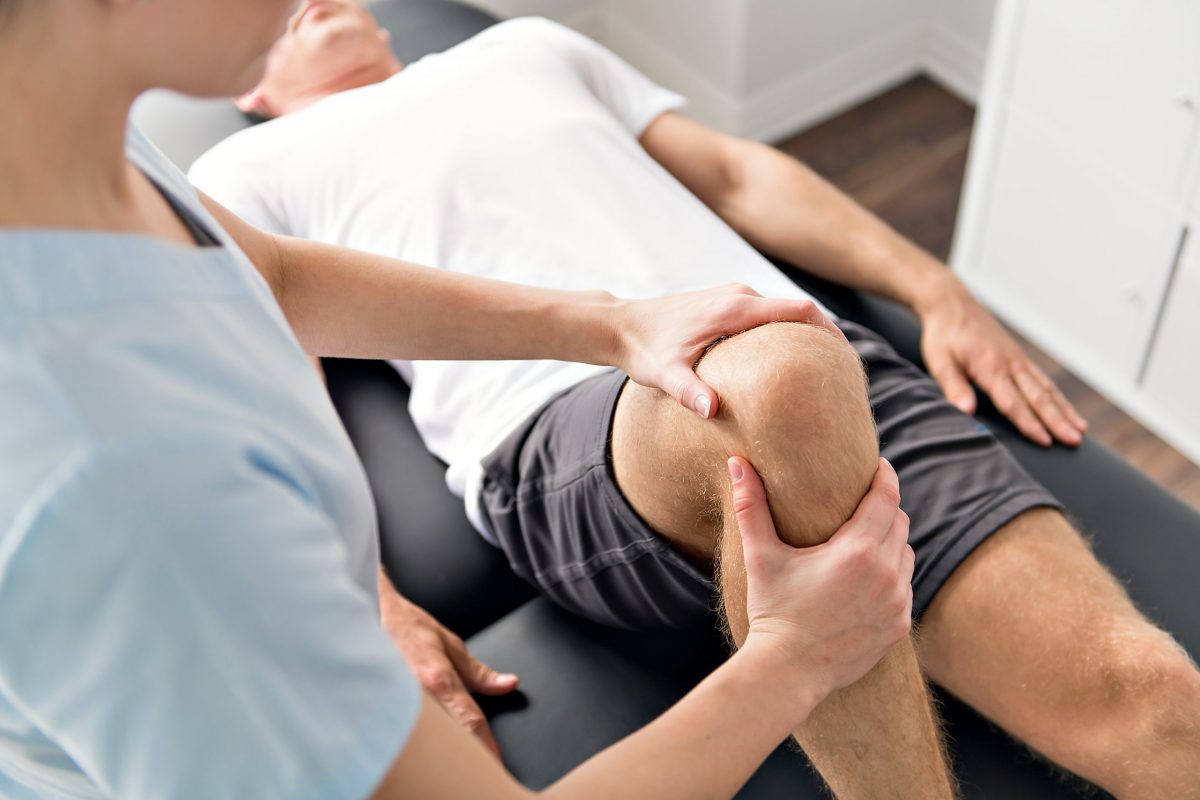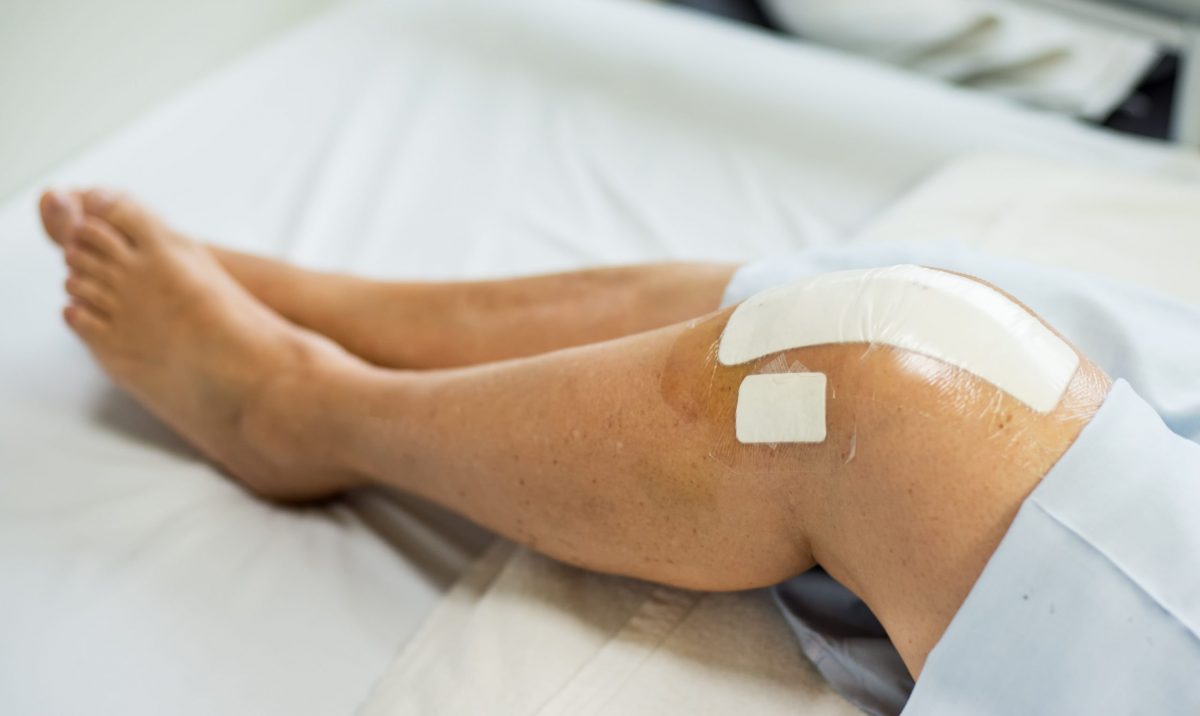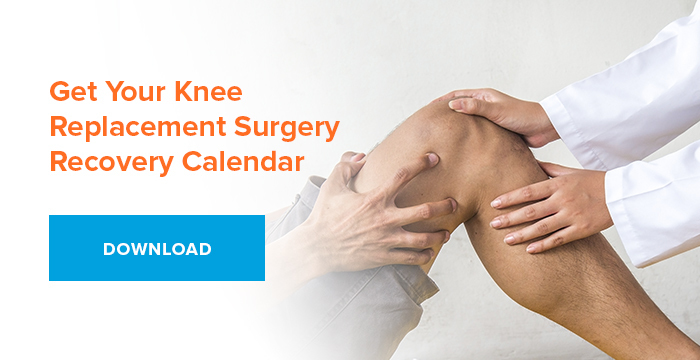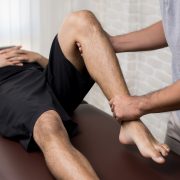
Prior to launching into how to maximize your knee replacement surgery recovery, take a look at this promising statistic: According to the American Academy of Orthopaedic Surgeons (AAOS), upwards of 90% of total knee replacements are still in working condition 15 years after surgery. One of the best ways to ensure a positive recovery from a knee replacement is to prepare ahead of time for your recovery at home. You can improve your healing by following the explicit post-surgery instructions of your surgeon and continuing to perform physical therapy exercises.
At EmergeOrtho—Triangle Region, our board-certified, fellowship-trained Joint Replacement and Knee and Hip Surgeons go above and beyond to make sure you are informed, prepared, and empowered for optimal knee surgery recovery. Our innovative approaches in knee replacement surgery have allowed many patients to Emerge Stronger. Healthier. Better.— able to return to the activities they enjoy most.
Knee Replacement Recovery Tips

It is comforting for knee replacement patients to learn that, in addition to having high long-term success rates, knee replacements also carry a low infection rate. Fewer than one or two percent of knee replacement recipients experience complications.
With that said, part of encouraging a healthy healing process following knee replacement surgery is being aware of the risks, which include:
- Blood Clots
Blood clots that develop in the veins of the legs are one of the most common complications following a knee replacement procedure. Since they can be life-threatening it is important to follow the prevention outline presented by your surgeon. Elevating the legs, increasing mobility, medication, and exercises can all prevent blood clots. Contact your doctor immediately if you experience increased pain, redness, tenderness, or swelling in your calf, redness below your knee, chest pain, or coughing. - Infection
Wound care will be an important aspect of your recovery process and will help prevent infection from forming. If you experience any sign of infection —such as severe pain, fever, swelling, redness, tenderness, or fluid drainage from or near your incision site—call your doctor right away. - Pneumonia
Shallow breathing comes with the territory during the early postoperative period, making patients more susceptible to developing pneumonia. To reduce the likelihood of lung issues, you will be advised to take deep and frequent breaths.
Additional risks such as continued pain, nerve damage, and knee joint implant issues may occur, however unlikely. It is important to go over all potential complications with your surgeon.
After educating yourself on possible post-surgery risk factors to watch for, it is important to know what else you can do to help promote a healthy recovery. Take a look at tips to keep you safe at home, boost healing, and work toward regaining your strength and mobility.
- Start moving your body shortly after surgery with the aid of your physical therapist.
- Assign a friend or family member to safety-proof your home. This means clearing any loose rugs, cords, and tripping hazards, as well as implementing a toilet seat riser, setting up a chair that is comfortable and allows for leg elevation, and handrails where needed.
- Take medication as prescribed by your surgeon. It is normal to feel some knee pain as you recover, but it should improve in time.
- Practice physical therapy exercises and stretches as provided by your surgeon or physical therapist, beginning as early as a few hours following surgery. More exercises and stretches may be prescribed gradually, as you begin to resume normal activity.
- Avoid submerging the stitches or staples along the incision area (these will be removed by your surgeon after a few weeks).
- Eat a balanced diet rich in iron—this helps with wound healing and for restoring muscle strength.
- Use assistive devices such as a cane, crutches, walker, and handrails, to protect you from falling.
Get Active, Stay Active!
One vital aspect of your recovery from home after knee replacement is getting active and remaining active. Those who strictly follow their physical therapy program are often able to resume most of their daily activities sooner after surgery.
Walking is one of the best ways to remain active, slowly building your mobility. Exercises prescribed as part of your initial post-recovery total knee replacement regimen may include:
- Quadriceps Sets
Tighten the thigh muscle, slowly straightening out the knee. Hold for five to ten seconds. Practice 10 repetitions during a two-minute duration. Rest one minute and repeat until your thigh feels tight. - Knee Bends (From Your Bed)
Sitting upright, legs extended in front of you. Slide your foot toward your buttocks, with your knee bent, your heel remaining on the bed. Hold your knee as far as it will bend in this position for five to ten seconds. Release slowly. Repeat until your leg feels tired or you can completely bend your knee. - Ankle Pumps
Move your foot up and down, contracting your calf and shin muscles for two to three-minute sessions until the calf and ankle tires. This exercise is recommended until you are fully recovered from total knee replacement surgery.
These special stretches and exercises (and others) help restore range-of-motion, prevent pain and stiffness, build muscle strength, and ultimately help you return to your favorite activities. It is important to remember that recovery differs for each individual and depending on different types of knee replacement options. Our EmergeOrtho—Triangle Region physicians and physical therapists focussed on personalized and patient-centered care to help you reach your recovery goals.
To learn more, self-schedule an appointment with one of our highly qualified EmergeOrtho–Triangle Region doctors. Or, call us any time at (919) 220-5255.








